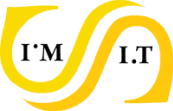While it’s great to hear that the technology is getting a warm reception, it’s a little hard to say exactly what these IoT initiatives might look like. Similar to cloud computing, the exact definition of what constitutes an IoT project will differ from one group to another. Some people might refer to connected office equipment, and others might mean smart cities. On the other hand, IoT differs from cloud computing in the initial breadth of application. Most early cloud projects involved migration of a single system and subsequent integration; most early IoT projects are extensions of ongoing activities, such as marketing efforts or inventory management.
Of course, companies are not just pursuing IoT for the heck of it. They expect to see some return on their investment. The top perceived benefits of IoT are roughly split between what could be characterized as “improving/extending existing capabilities” and “leveraging something new.” From cost savings to productivity gains to data-driven decision making, companies are utilizing IoT to continue their transformation into digital organizations.
As with any new technology, there will be some bumps along the way. Finances, of course, are standard fare when it comes to adoption challenges, whether it’s the upfront cost or the ROI justification. Some challenges are more specific, such as the complexity of these new systems or interoperability as standards and protocols are sorted out.
For the IT pro, one challenge can be tackled head on. 40% of companies cite the lack of skilled workers as a potential barrier to IoT adoption—a number that is likely to rise as more companies explore this new field. Building IoT skills starts with the basics. As CompTIA’s IT framework showed, advanced IoT skills will grow from existing skills in Infrastructure, Development, Security, and Data. All four of these areas play together to create comprehensive IoT solutions, and any IoT specialization will primarily reside inside one of these pillars.
Two specific areas that will blend old and new skills are networking and security. Many companies encounter the need for network upgrades when adopting new technology. There is so much more data crossing the wires, and there must be adequate bandwidth, redundancy, and quality of service. With security, companies are starting to realize that a modern security approach includes not just technology, but also process management and end user education. With physical devices gaining intelligence and connectivity, this balancing act takes on a new dimension.
The Internet of Things started off with a few strikes against it. The name didn’t necessarily inspire confidence, the examples left something to be desired (zombie refrigerators, anyone?), and the previous trends of cloud and mobility had set a precedent that was tough to follow. But the potential benefits that can come from connecting our physical world to the Internet are truly remarkable, and IT pros have a great opportunity to extend their skills to drive more value for their business.
URL : http://windowsitpro.com/iot/internet-things-moving-hype-reality


 RSS Feed
RSS Feed